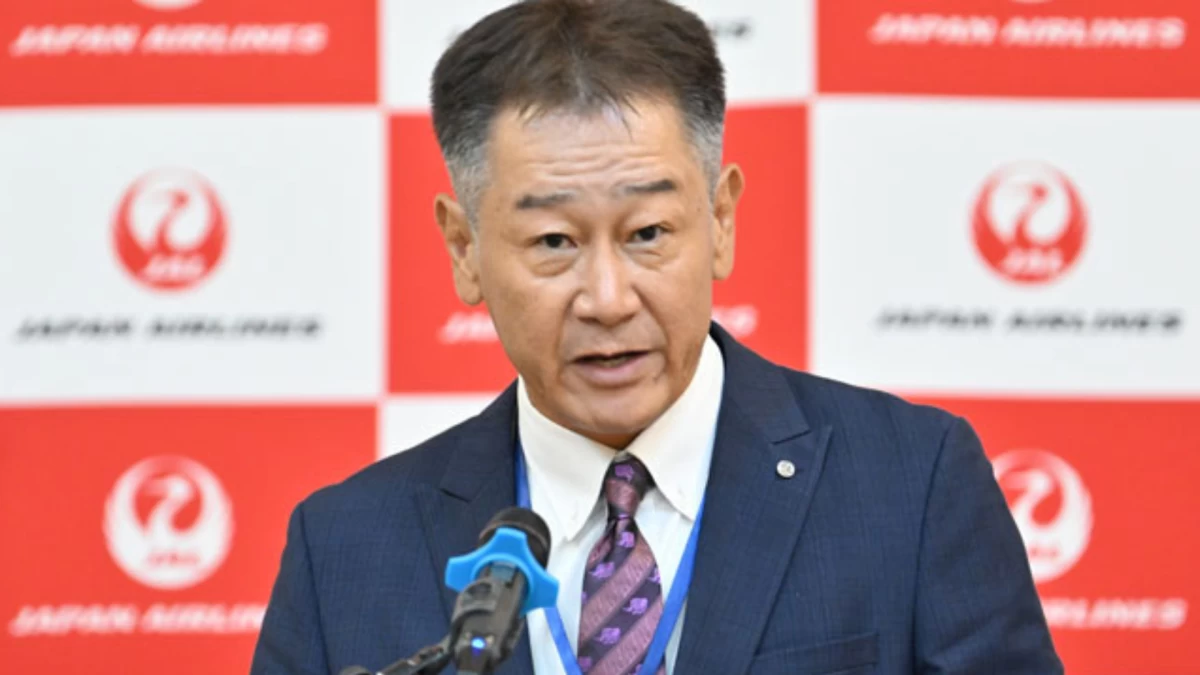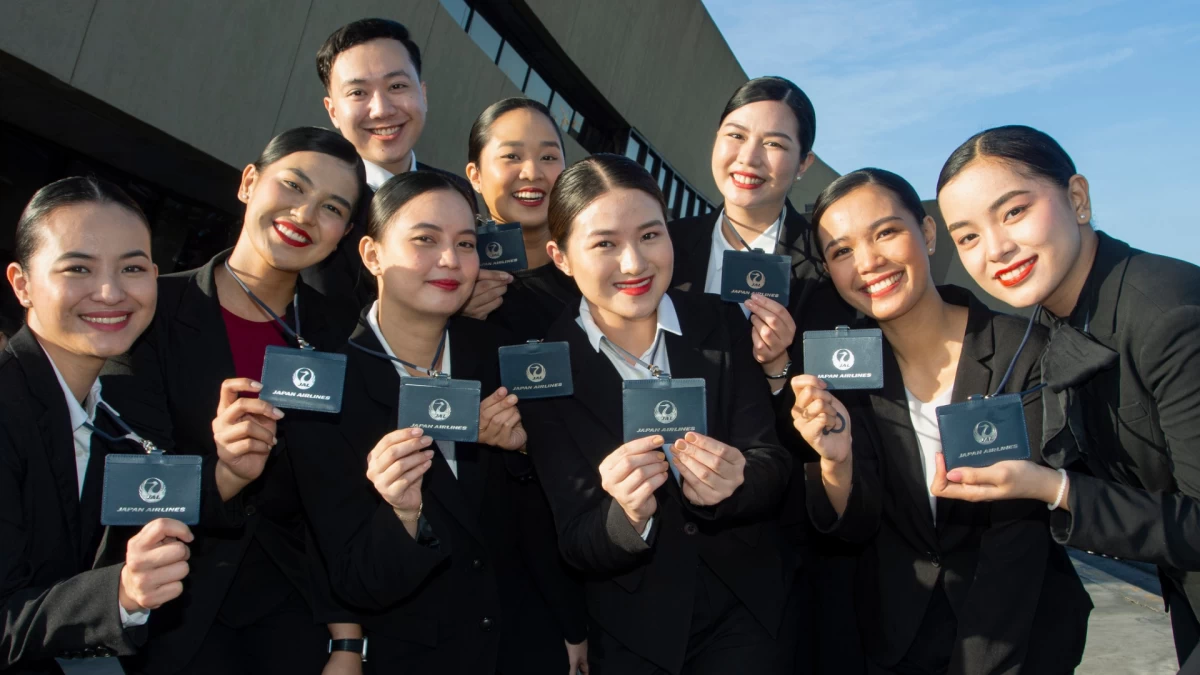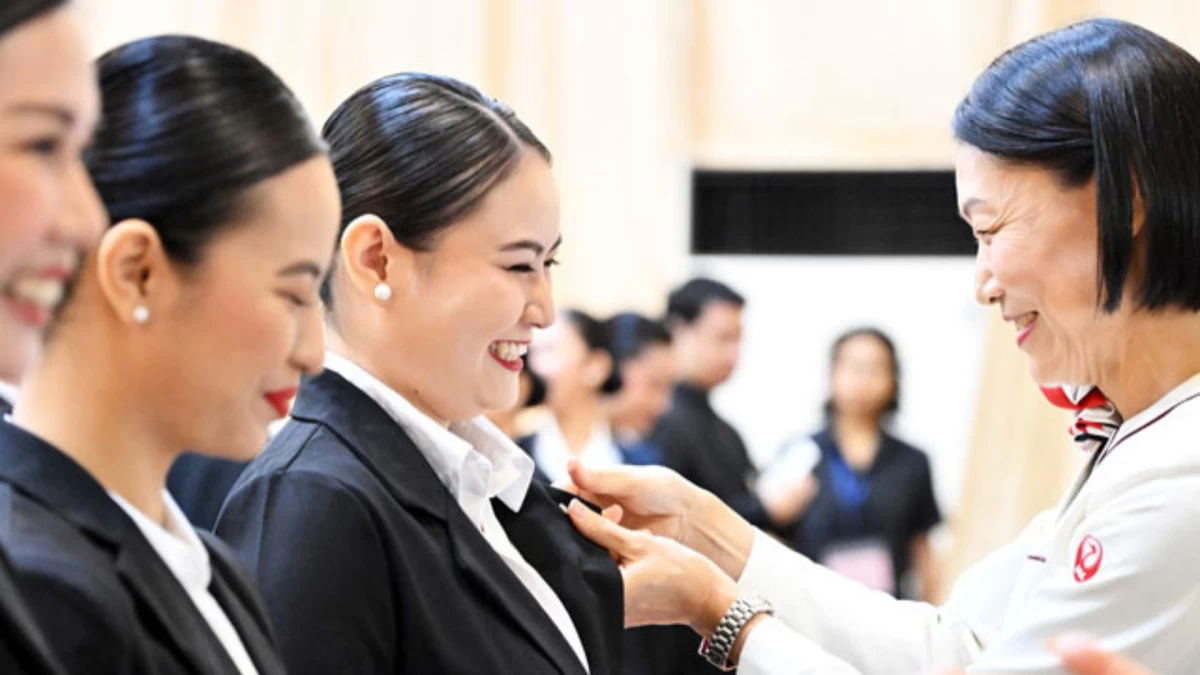
Upgrade to High-Speed Internet for only ₱1499/month!
Enjoy up to 100 Mbps fiber broadband, perfect for browsing, streaming, and gaming.
Visit Suniway.ph to learn

The new face of JAL service: Warm Filipino smiles meet Japanese precision.
Japan Airlines (JAL) is recruiting internationally to staff its flights, opening its first new overseas crew base in nearly 30 years in Manila, as the airline faces shortage of young domestic workers and growing non-Japanese customer base.
Like many major Japanese corporations, the nation’s second-largest airline confronts an aging workforce and a younger generation wary of conventional careers. For a global carrier built on service, this demographic shift threatens the very core of its operations.
For this reason, JAL is breaking decades of corporate tradition by turning to Manila as the long-term solution to Japan’s population crisis, leveraging Philippine demographics and hospitality to help ensure its future service standards.
The urgency of JAL’s move is rooted in data, according to JAL General Manager for the Philippines Takayuki Funabashi, who explained that Japan’s declining population and the effects of the Covid-19 pandemic are shrinking the pool of young, interested cabin attendant graduates.

JAL General Manager for the Philippines Takayuki Funabashi (Photo from TDG Human Resource Management)
“During the pandemic, our salaries worsened and our company benefits also declined," explained Takayuki during a recent interview. “This led to a widespread feeling that our company was financially weak. Now, many Japanese students are less interested in becoming a cabin attendant.”
Beyond perceived job instability, the macroeconomics of weak Japanese Yen is also a factor. Takayuki noted that the weak local currency is a reason why Japanese people are not traveling abroad as much, and reduced the incentive for young people to pursue a career that requires international travel.
The confluence of these factors, Takayuki admitted, created the staffing gap that Tokyo simply cannot fill domestically.
However, while the number of Japanese passengers is plateauing or declining, he revealed that the number of non-Japanese passengers is steadily increasing—a trend seen on JAL's Manila-Tokyo routes, where Filipinos and other foreigners now often make up the majority.
He said this evolving passenger mix requires multilingual, culturally adaptable crew, something the predominantly Japanese staff has struggled to provide.
“The limitation was that many of our Japanese crew’s English proficiency was an issue," the JAL representative confirmed.
Calculated, long-term strategy
But JAL’s Manila initiative is not a reaction but the culmination of long-term planning. Takayuki said the decision was first conceptualized by the airline’s planning section around 2018, long before the pandemic fully hit. They saw ahead.

Recruited from Manila, these crew members represent JAL’s answer to Japan’s labor problem. The airline plans to hire 100 Filipinos in five years to ensure its service standards remain globally competitive. (Photo from TDG Human Resource Management)
“The Japanese population is decreasing, which means the number of Japanese traveling abroad is also decreasing,” Takayuki explained. “Conversely, more people from other countries are visiting Japan. The planning team saw this trend coming."
The choice of the Philippines was also far from accidental. While other East Asian nations like Malaysia, Vietnam, and Indonesia were considered, Takayuki said JAL decided that “Filipino hospitality is a perfect fit for our Japanese-style service.”
The airline’s long-term target is to increase its proportion of foreign cabin crew from a “very small” number to at least 15 percent of its total workforce. The Manila base is the engine for this growth, with a goal to hire 100 Filipinos in the next five years.
Takayuki said this hiring pipeline would ensure reliable, English-proficient, and service-oriented workforce.
Moreover, the establishment of the Manila base serves a dual purpose: it shores up JAL’s labor supply and directly enhances the passenger experience on high-growth routes, such as Tokyo-North America.
“On our Tokyo to US routes, we have many foreign passengers... We need a Filipino cabin attendant,” Takayuki noted, highlighting the immediate operational benefit of having a crew that can communicate comfortably and empathetically with non-Japanese flyers.
Power of Omotenashi and the Filipino smile
JAL’s training philosophy demonstrates an approach to cultural integration that aims for a hybrid service standard.

Ejima Akiyo, JAL Chief Director for Manila (right), fastens a pin during the ceremonial wings pinning event. This tradition marks the official entry of new Filipino cabin crew into the Japan Airlines team. (Photo from TDG Human Resource Management)
Ejima Akiyo, JAL chief director for Manila, said that the core of their service standards remains the Japanese concept of Omotenashi—the deeply attentive, anticipatory form of Japanese hospitality. However, JAL has also come to value the Filipino complement.
“We have a basic service policy that is rooted in Japanese culture,” Ejima said. “But we emphasize the genuine Filipino hospitality, which is a wonderful service addition for all passengers.”
This integration is most visible in simple gestures, such as smiling. While Japanese crew may offer a more subtle, reserved smile, JAL found that the Filipino’s “natural, warm smile” is a significant positive for many passengers.
Ejima said it creates an atmosphere where passengers, particularly Filipinos flying home, feel immediately “at home.”
The feedback from passengers has also been overwhelmingly positive. Ejima said they appreciate the crew’s ability to communicate in English and Tagalog, which is especially comforting for elderly passengers.
Likewise, Ejima said the infusion of Filipino staff has had an internal effect, as the Japanese headquarters itself has noted that since the foreign crew joined, the team environment has become “brighter” and more “fun.” The Manila base is not only a solution for external services but also an internal revitalization of the company's culture, she added.
JAL’s strategic investment in Manila is a microcosm of a larger trend in global aviation. As traditional labor markets tighten and customer bases diversify, airlines must adapt their human resources strategy to survive.

As JAL's customer base becomes increasingly non-Japanese, crew members like this Filipino attendant ensure multilingual comfort, helping passengers—especially on high-growth routes like Tokyo to North America—feel immediately at home (Photo from TDG Human Resource Management)
For JAL, the Manila base represents more than just a recruitment center, it is a forward operating base in the battle against demographic decline.
By leveraging the Philippines’ young, skilled, and customer-focused talent pool, Takayuki said JAL is securing its operational future and positioning itself to deliver a uniquely blended service that is both traditionally Japanese and globally welcoming.
The success of the Manila base will set the blueprint for JAL’s service evolution, proving that a decades-old carrier can remain modern, globally competitive, and resilient, even in the face of profound domestic challenges.

 12 hours ago
1
12 hours ago
1



